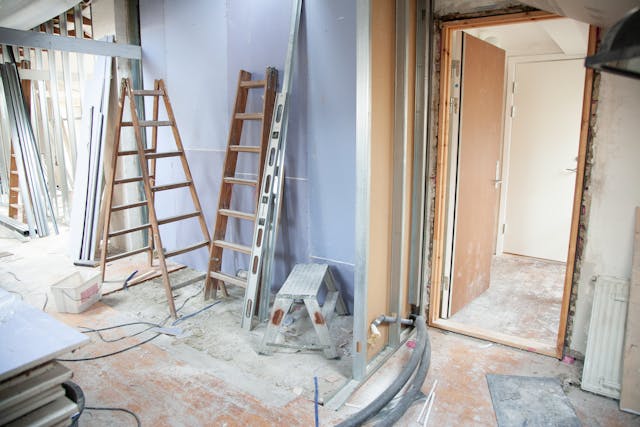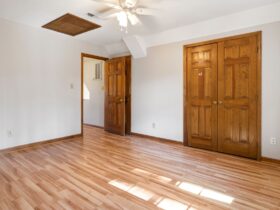Ever started a renovation thinking it would be quick and simple? And then halfway through there’s dust everywhere, workers gone for days, and a bill that feels like it doubled overnight. Many projects spin out like that because the planning is rushed. Or skipped. Avoiding that chaos needs more than hope, it needs structure. In this blog, we will share how to plan home projects so they finish on time and with a budget that actually works.
Build a Budget and Timeline Before Work Starts
Once priorities are clear, a budget gets built. It becomes the backbone of everything. Surprises always come up. A pipe leak behind a wall. Materials that cost more than you thought. Adding a contingency, about 10 or 15 percent, helps cover the unplanned without stopping the job cold. Conversations with contractors about labor, supplies, and extra charges should be had early. Without those talks, sticker shock shows up later and derails things fast.
Timelines need the same attention. Delivery delays, permit offices moving slow, or a contractor juggling jobs can stretch a two-week task into a month. Building realistic schedules—not just guesses—keeps the work moving. Some people phase projects out over a few months to make them easier to handle. Doing that often cuts down stress and spreads costs, which helps a household keep running while rooms get torn apart.
Know Priorities Before You Spend
Every home has multiple areas calling for attention. Few can afford to do it all at once. Projects get smoother when real needs are ranked first. Structural problems—like leaks or roof issues—are handled first since ignoring them can undo every other upgrade later. After that, kitchens and bathrooms usually rise to the top because they impact daily life the most and often add the most value right away.
For bathrooms, many turn now to EZ Baths & Walk In Tubs for faster results. Traditional tile jobs can stretch on for weeks and bring heavy upkeep. Their custom acrylic bath systems get installed in a single day. They need little maintenance, look polished, and remove weeks of mess that drag projects behind. Using efficient solutions like these can free time and budget for other areas without leaving a house stuck as a work zone for too long.
Check Contractors and Materials Carefully
How well a renovation goes often depends on who does the work. And what they use. Contractors need to be researched, their past work checked, references called. Picking a low bid from someone unreliable can cost more in the end. People who show up, keep timelines, and communicate clearly are worth paying for, even if it feels like more upfront.
Materials play a big role too. Cheaper products save money now but often break or wear down faster. Engineered wood floors, composite decking, or quality fixtures usually last longer and handle heavy use better. Spending a bit more on things that last saves repairs later. Balancing durability with what you can actually spend is key if you want to avoid fixing the same space again in a couple of years.
Think About How Spaces Work
Most renovations get driven by how things look. But if they don’t work right, that excitement fades fast. Function keeps a space useful long after shiny finishes lose their shine. A kitchen that looks sleek but lacks counter space ends up being a hassle. A living room with trendy furniture but no room to actually sit as a family often feels wrong.
Lighting, airflow, and layout matter just as much as finishes. They may not feel exciting now, but they make the difference between a room people use every day and one that sits unused. Choosing fabrics that handle wear, layouts that fit routines, and practical details is what keeps a renovation feeling like it was really worth it.
Pick Timing That Fits Life and Weather
When work happens can be as important as how it’s done. Exterior jobs like roofing or painting should be done in good weather, not during freezing or rainy months. Indoor remodels can be easier when outdoor areas can be used more, taking pressure off cramped living spaces.
Some schedule work while away on vacation to avoid the daily mess. Others spread out multiple projects over time so the house stays livable. Stacking big renovations all at once usually brings stress and makes it harder to stay on top of schedules and budgets.
Stay Flexible But Keep the Core Plan
Even when every detail is planned, something usually shifts. Materials get delayed. A wall opens up and reveals damage. Contractor schedules change. Flexibility matters here, but without letting the entire plan fall apart.
Regular check-ins help. Writing down any changes and adjusting small things while holding onto the big goals keeps the project from drifting. You can bend on finishes or minor layouts if it keeps progress going, but comfort and value—the main reasons for the work—should stay protected.
Why This Approach Works
Rising material prices and labor shortages make winging it too risky now. Homeowners who slow down to plan, set a budget, choose the right people, and weigh both style and function tend to finish projects with less stress and fewer costs. They avoid drawn-out timelines, surprise bills, and the cycle of redoing work every few years.
Renovations done with this kind of care reflect a bigger shift too. Fewer people chase quick trends or try to do every room at once. Instead, more focus goes to quality, efficiency, and work that holds up for years. Phased projects save money, keep homes livable, and deliver spaces that feel finished instead of rushed.
With the right priorities, honest planning, and trusted help, home improvements stop feeling endless. They become upgrades that really add comfort and value without draining patience or savings. That’s the goal every time, isn’t it?








Leave a Reply